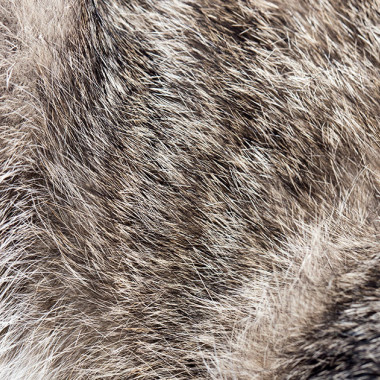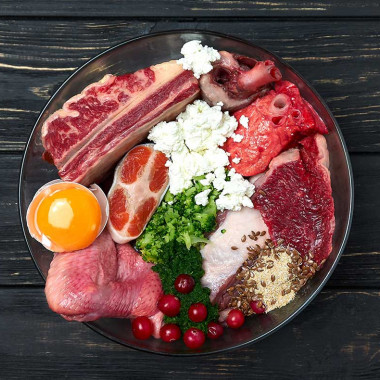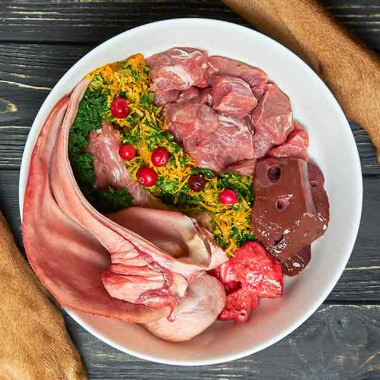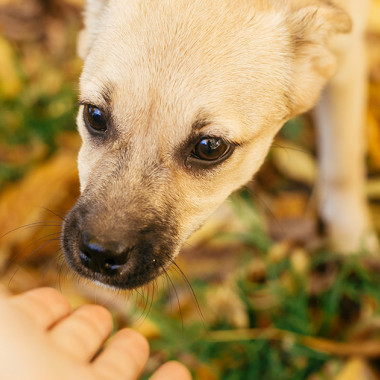If we care about the well-being of our senior dog and want to provide them with a healthy and happy life, we should consider giving them a quality diet through BARF. This article focuses on feeding senior dogs with the BARF diet.
The diet for senior dogs differs from the needs of young and adult dogs. When a dog becomes a senior is individual, but generally, small breeds age between 8-10 years, large breeds from 8 years, and giant breeds from 6 years old.
Nutritional Composition of the Food
An older dog digests food less efficiently and cannot utilize all nutrients. Therefore, the diet should contain more calcium, phosphorus, and twice the amount of vitamins B, E, and minerals like copper, zinc, and manganese. Vitamins and minerals can be given as supplements designed for seniors. On the other hand, we should reduce the amount of protein and fats, as less active dogs may become obese. It is essential to feed meats with easily digestible proteins, such as chicken, turkey, lamb, veal, and rabbit. This is especially true at the beginning of feeding raw food. A sufficient intake of fiber and water is crucial to ensure proper bowel movement.
Composition of a Senior Dog’s Diet
Since older dogs need fewer proteins and fats, their diet should consist of 40% meat, 20% bones, and 40% side dishes.
How Often to Feed an Older Dog?
Older dogs can be fed twice a day, but it is ideal to feed them 3-4 times a day. To avoid straining their digestion with large portions, it is better to divide their daily food intake into 3-4 smaller meals.
If a dog has been fed kibble all its life, transitioning to BARF should be done gradually. Switch to raw food overnight. Start by feeding easily digestible meats such as rabbit, lamb, chicken, turkey, or veal. Chicken stomachs and hearts can also be given. After 3-4 weeks, you can include other types of meat and offal in the diet. Initially, grind the meat and offal, cut them into small pieces, or lightly cook them, depending on the condition of the dog's teeth. Bones should only be introduced after 3 weeks. The most suitable bones are poultry carcasses and wings. If the dog has missing teeth and cannot chew bones, they can be ground or chopped. Side dishes include vegetables, fruits, rice, and oatmeal. Vegetables and fruits should be prepared to make them easier to digest for the dog. They can be grated, chopped, blended, steamed, or frozen. Vegetable and fruit juices are also beneficial, providing an additional source of water.
To make the transition to raw food smoother, herbs can be given to support digestion and later to detoxify the body. Various types of dairy products are also beneficial for dogs. Plain yogurt, acidophilus milk, kefir milk, cottage cheese, or buttermilk contain lactic acid bacteria. These bacteria, like Bifidobacterium or Lactobacillus, help suppress pathogenic bacteria in the small intestine, thereby enhancing the dog’s immunity.
We believe that the BARF diet will ensure a quality life for every senior dog.










